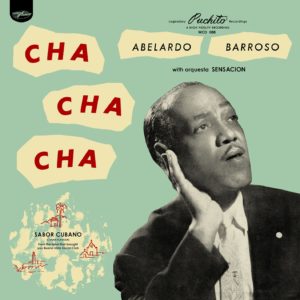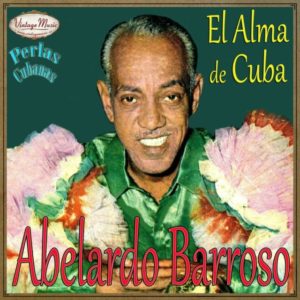
ABELARDO BARROSO, CANTANTE, COMPOSITOR Y DIRECTOR DE ORQUESTA. VIDEOS.
Abelardo Barroso Dargeles nació en la Habana un 21 de septiembre de 1905 y fue el primer cantante de son cubano conocido como “sonero mayor” y reconocido así por el público.
Fue cantante del Sexteto Habanero en 1925 y grabó con el Sexteto Boloña de Alfredo Boloña en 1926. También, en 1927, fue cantante del Septeto Nacional de Ignacio Piñeiro. Con todas esas agrupaciones grabó muchos temas en la ciudad de Nueva York, y permaneció en el gusto del público durante toda su carrera.
En 1930 se unió al grupo de variedades Salmerón, con el que realizó una gira por España.
https://youtu.be/P8u0lCHoFXM
Al volver a Cuba en 1931, se une a la Orquesta Ernesto Muñoz y en 1933 funda la charanga López & Barroso con Orestes López, al mismo tiempo que alternaba con el Sexteto Universo.
En 1935 funda el Sexteto Pinin. y también actuó con las bandas de Andrés Laferté y Everado Ordaz. En 1939, se unió a la importante charanga Maravillas del Siglo y realizó presentaciones en Radio COCO.
Durante los años 1940s trabajó en el cabaret Sans-Souci hasta 1948, cuando pasa a ser director y cantante de la Banda de la Policía Nacional.
Finalmente creó su propia banda, la Orquesta Sensación, una charanga de primera clase. Ganaron un disco de oro por su canción ‘En Guantánamo’ y ‘Arráncame la vida’. Con esta orquesta se presentó en Miami en 1957 y en Nueva York en 1959 y 1960. Abelardo se retiró en 1969.
Abelardo Barroso murió en la Habana el 27 de septiembre de 1972.
 ABELARDO BARROSO, SINGER, COMPOSER AND BAND LEADER. VIDEOS.
ABELARDO BARROSO, SINGER, COMPOSER AND BAND LEADER. VIDEOS.
The singer Abelardo Barroso Dargeles was born September 21, 1905, and was the first sonero mayor (lead singer of the son) to be recognized as such by the Cuban public.
He was the lead singer of the Sexteto Habanero from 1925, recorded with the Sexteto Boloña in 1926, and joined the Septeto Nacional de Ignacio Piñeiro in 1927. With each of these top bands, he made a string of recordings in New York, and for the rest of his life his voice was in demand.
In 1929–1930 he joined the stage variety group Salmerón, with whom he toured Spain. Returning to Cuba in 1931, he joined the Orquesta Ernesto Muñoz. In 1933 he founded the charanga López–Barroso with Orestes López. He appeared alternately with this band and with the Sexteto Universo, and in 1935 founded the Sexteto Pinin.
There followed spells with the bands of Andrés Laferté and Everardo Ordáz before, in 1939, he joined the important charanga Maravillas del Siglo and performed on Radio COCO. During the 1940s he worked at the cabaret Sans-Souci until 1948 when he directed and sang for the National Police Band. After a short hiatus, he joined Rolando Valdés’ Orquesta Sensación, which would spearhead the second great charanga movement (the first wave included Antonio Arcaño y sus Maravillas and Melodías del 40).
https://youtu.be/FXVjjUiDs4U
They won the Disco de Oro for a recording of “En Guantánamo” and “Arráncame la vida”. With La Sensación he appeared in Miami in 1957 and in New York in 1959 and 1960. He retired in 1969.
Barroso died in La Habana on September 27, 1972.
Agencies/ Wiki/ Various/ Internet Photos/ YouTube/ www.TheCubanHistory.com
THE CUBAN HISTORY, HOLLYWOOD.






